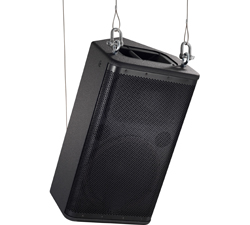
Ropes
Before discussing actual rigging hardware and systems, it is appropriate to examine ropes and their proper use. Ropes are used for many rigging functions.
Although synthetic ropes of great strength are available, most codes prohibit their permanent use in rigging for a variety of good reasons. Nevertheless, ropes are necessary to lift approved cables, fixtures, tools and equipment into position.
In the interest of safety it is important that ground workers be familiar with the proper use of rope and a few basic knots used in rigging.
Rope Terminology:
1. The Standing Part is the end of the rope which is inactive.
2. The End is the part of the rope that is free—typically the part in which knots are tied.
3. A Bight is the central part of the rope between the standing part and the working end.
4. An Overhand Loop is formed by crossing the end over the standing part.
5. An Underhand Loop is made by crossing the end under the standing part.
6. Tightening. Once formed, a knot must be tightened slowly and with care. Failure to do so could result in a tangle, or an untrustworthy knot.
Knot Efficiency
Knot efficiency is the approximate strength of a rope with a knot as compared to the full strength of the rope.
It is expressed at a percentage of the ropes rated capacity, and refers to the stresses that the knot imposes upon the rope.
When a knot is tied in a good rope, failure under stress is certain to occur at the knot. This is because bends result in uneven stresses upon the fibers, with the outsides of the bends taking a greater share of the load.
lt follows that the tighter the knot, the greater the percentage of the total load that is carried on fewer fibers.
Bends
Bends are used to join two pieces of rope, usually temporarily. Typical knot efficiency is 56%. Bends offer some advantage over binding knots, as they resist untying when slackened or jerked.
The Sheet Bend is a simple knot to tie, consisting of an overhand loop on one piece, with the second rope end fed up through the loop from behind, around the standing part of the first rope and back down through the loop from the front.
Binding Knots
Binding knots are also used to join two pieces of rope. In general, binding knots have a knot efficiency of 50%, but can untie easily when a free end is jerked.
In the square knot, the end and the standing part of each line tie together through the bight of the other. In the untrustworthy granny knot, the end and the standing part are separated by the bight.
The granny knot is particularly treacherous in that it will appear to be secure-only to slip under load. The thief knot is deceptively similar to the square knot, but has the two loose ends coming out of the opposite sides, instead of from the same side as in the square knot.
This knot is almost certain to fail under load.
